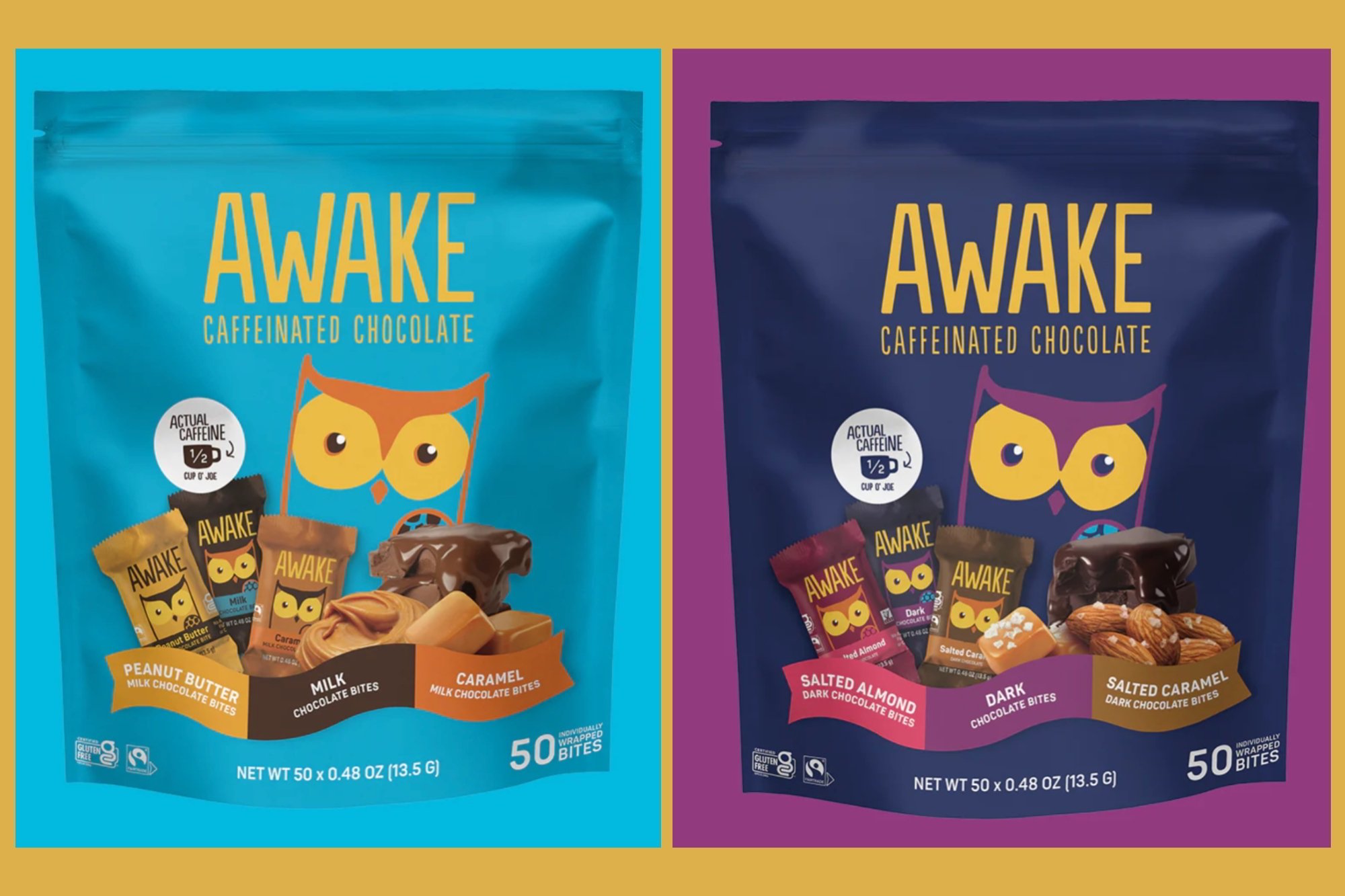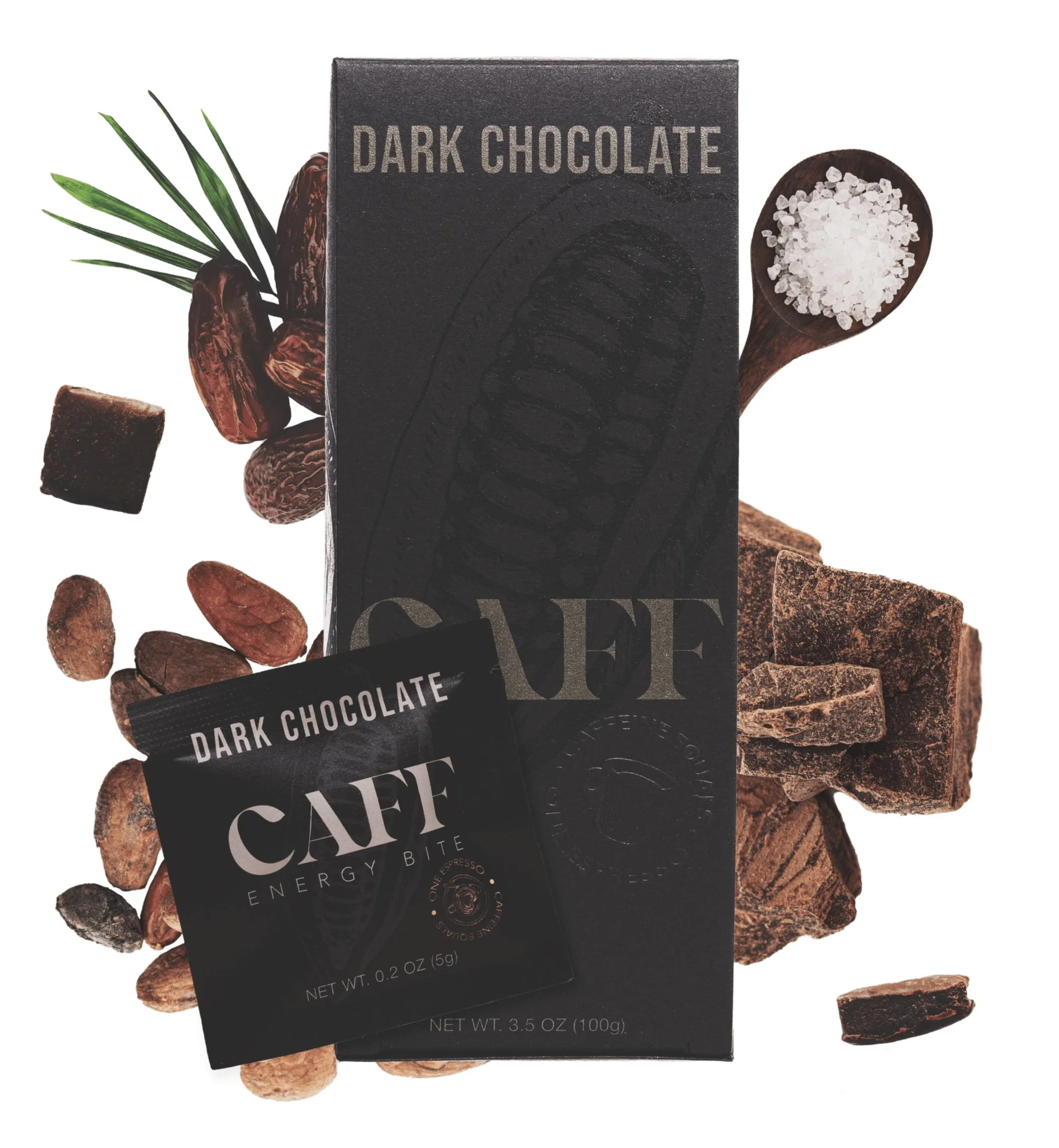4 Caffeinated Chocolates for the Sweetest Buzz
Coffee and chocolate
Caffeine has long reigned as the beloved, go-to jolt in coffee, tea, and energy drinks. While chocolate has some caffeine, it doesn't provide nearly the stimulant kick that other caffeinated drinks do. Hot chocolate contains a meager 5 milligrams of caffeine compared to 95 milligrams in coffee and anywhere between 25 and 50 milligrams in black tea.
But in recent years, companies have flooded the market with caffeine-infused chocolate bites and bars, which provide an edible pick-me-up in even more convenient packaging, most commonly sold in individual servings. It's not surprising, given that today’s consumers want more from their candy than just a sugar rush. According to market analysts at Data M Intelligence, the Global Functional Confectionery Market reached US$ 2.30 billion in 2022 and is expected to reach US$ 3.98 billion by 2031, growing with a CAGR of 7.1% during the forecast period 2024-2031.
Awake caffeinated chocolate
After working together at Kraft Heinz and PepsiCo, Adam Deremo, Matt Schnarr and Dan Tzotzi founded Awake in 2012. They successfully pitched the idea on Dragon’s Den. The company crafts Kosher, non-GMO verified, gluten-free bites and bars using Fair Trade-certified chocolate, cane sugar and no artificial colors or flavors. The dark and milk chocolate bites and bars come in various flavors including mint, almond sea salt, caramel and peanut butter.
“We always look for the best ingredients, and certifications like gluten-free can be good quality indicators,” the CEO Adam Deremo says. “[Our goal, to] ‘Do What’s Right’ ensures everyone in our value chain is paid fairly and our raw materials are sustainable.”
The brand targets consumers who want more energy but don’t like the flavor of caffeinated beverages. Each 60-70 calorie bite incorporates 50 milligrams of caffeine – equal to half a cup of coffee. Dark Chocolate Bars incorporate dark chocolate, soy lecithin, natural vanilla extract, and vegetable oil.
“We wanted Awake chocolate to be truly delicious,’ Deremo says, “and the more we learned about the chocolate category, the more we realized nothing truly innovative had come to market in decades.
“We create recipes with our manufacturing partners. I am heavily involved in new product development, and my co-founders and I are the first ones to taste anything new. No products go to market unless they are truly delicious.”
The owl logo reflects the bird’s nocturnal nature and nods at the functional energy Awake delivers. “Other chocolate brands don’t have mascots, so we thought it would be fun to create a character that embodied the irreverent and fun ethos of our brand,” Deremo says.
New flavors with additional innovative functional benefits should launch in the next 12-24 months. “We’re really excited about them,” Deremo says. The brand has recently expanded their footprint with a spooky season seasonal push into 52 Costco locations across the Southeast US.
Caff dark chocolate
Jude Gingo had personal reasons to create CAFF, a line of organic energy bites in peanut butter and chocolate. “Several years ago, I was struggling with sleep and realized I was drinking too much caffeine, like many Americans,” says the brand's founder and CEO. “A medium roast at Starbucks has nearly as much caffeine as the FDA’s suggested daily caffeine limit (350 mg vs. 400 mg), and many Americans drink that twice a day.
“I created CAFF to offer a moderate, clearly labeled caffeine dose in a food format, that digests 2-3x more smoothly than liquids. Our bites are chewy like cookie dough thanks to dates. Each bite has just 15–20 calories and a smooth, espresso-level dose of green tea caffeine (~65mg).” Organic, vegan, keto, and gluten free ingredients complement this caffeine source, chosen because it’s less bitter than coffee and contains L-theanine, an amino acid that promotes calmness and focus.
Dates sweeten CAFF’s Dark Chocolate bites. “Dates are a natural, unprocessed sweetener with a lower glycemic index than cane sugar, providing steady energy without the jitters and crash,” Gingo says.
COBA bars
Founder, Peter Lee, opened multi-award-winning Coba, which stands for Coffee Bar in 2018, after immersion in the coffee trade of South America, and Tanzania. Lee considered what might be the next evolution of coffee and then made his first bars after messy, noisy experimentation in his dorm room. “But it smelled amazing, and I was a pretty popular kid on the block,” he says.
Coba’s One Bar replaces the caffeine in a cup of coffee or tea. At .53 ounces per bar these low calorie, convenient, and compact bars are also low in sugar. However, Lee does caution customers to eat small portions rather than every piece in each bag of bars.
Much of the company’s ingredient authenticity reflects Lee’s travels, including to Japan. “What I was trying to do was innovate the coffee industry and, as a byproduct we’ve expanded chocolate varieties [that encourage] younger people to come to the chocolate aisle for the first time,” he says.
“We’ve taken our flavors and made them into chocolate bars – especially for outdoor environments.”
Because roughly half of caffeinated beverages sold in ‘café culture’ are teas, Coba mills down teas before infusing some bars with tea-based caffeine.
While The Espresso Bar includes coffee, the Hojicha Latte Bar, Matcha Latte Bar, and Chai Latte Bar get their caffeine buzz from a variety of popular teas.
Although each bar is a different color, they all incorporate pure white cane sugar, and German white chocolate. “And then we replace the cocoa with coffee or tea,” Lee says.
ZenEvo
The ZenEvo tagline is "chocolate with a purpose." Eddy Reymond co-founder, co-owner and President says, "We came up with the idea in 2011 when functional foods were becoming more popular and [the focus] was starting to shift from energy drinks to other foods."
“I wanted to create something that could be healthy and still give energy. We used my knowledge, from being in the health food and supplement industry for 16 years, to create the concept.”
The initial dark chocolate energy square, which incorporated 75mg of caffeine (equivalent to one shot of espresso) wasn’t strong enough for many consumers. However, most people noticed 150 mg of caffeine per square, equal to 1 ½ cups of coffee. “I did not want to go above 150mg as it would make it easier to get too much, especially if someone ate more than one square,” Reymond says
Reymond’s health background also made him aware of caffeine’s potential impact on adrenal function. But ashwagandha, maca, and ginseng in each square are added to rebuild the adrenals – which caffeine may otherwise drain, causing fatigue or a ‘crash.’
ZenEvo squares incorporate 54% dark chocolate. Reymond appreciates how the natural bitterness of chocolate hides the bitterness of the caffeine and other ingredients, reducing the need for additional sweetness, flavors, or artificial ingredients.
“With dark chocolate, the more cacao the less sugar,” he says. “We also picked a mint variation, and berry, after trying many other possibilities. We chose the [flavors] that tasted best with our ingredients and that people would enjoy.”
Looking Forward
As caffeine migrates from mugs to candy aisles, these chocolate brands are redefining what a pick-me-up can look and taste like. With the functional candy market booming, the future of the sugar rush is perking right up.





